-
 Bitcoin
Bitcoin $83,291.0340
-0.96% -
 Ethereum
Ethereum $1,826.6379
-1.54% -
 Tether USDt
Tether USDt $0.9998
0.00% -
 XRP
XRP $2.0549
-1.26% -
 BNB
BNB $606.8753
1.28% -
 Solana
Solana $119.1310
-4.05% -
 USDC
USDC $1.0000
0.00% -
 Dogecoin
Dogecoin $0.1659
-1.56% -
 Cardano
Cardano $0.6500
-2.57% -
 TRON
TRON $0.2364
-0.34% -
 Toncoin
Toncoin $3.7730
-5.06% -
 UNUS SED LEO
UNUS SED LEO $9.4476
0.65% -
 Chainlink
Chainlink $13.0772
-2.81% -
 Stellar
Stellar $0.2627
-1.16% -
 Avalanche
Avalanche $18.6021
-1.63% -
 Sui
Sui $2.3506
0.90% -
 Shiba Inu
Shiba Inu $0.0...01230
1.04% -
 Hedera
Hedera $0.1637
0.05% -
 Litecoin
Litecoin $83.5759
2.10% -
 Polkadot
Polkadot $4.0229
-0.74% -
 MANTRA
MANTRA $6.3749
2.08% -
 Bitcoin Cash
Bitcoin Cash $303.6743
-0.24% -
 Bitget Token
Bitget Token $4.5449
-0.46% -
 Dai
Dai $1.0000
-0.01% -
 Ethena USDe
Ethena USDe $0.9997
-0.01% -
 Pi
Pi $0.6435
-7.05% -
 Hyperliquid
Hyperliquid $12.2904
-5.52% -
 Monero
Monero $214.8078
-0.76% -
 Uniswap
Uniswap $6.0066
-0.82% -
 Aptos
Aptos $5.2560
0.22%
What is a Long Position?
A long cryptocurrency position bets on price increases, achieved by buying low and selling high. Methods include spot trading, futures, and leveraged trading—each with varying risk levels requiring careful market analysis and risk management.
Mar 21, 2025 at 11:28 am
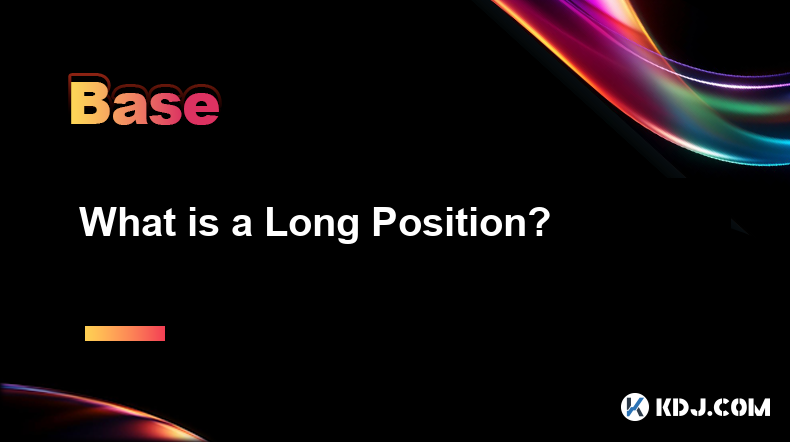
Key Points:
- A long position in cryptocurrency represents a bet that the price of a specific cryptocurrency will increase in value.
- Establishing a long position involves buying cryptocurrency with the expectation of selling it later at a higher price, profiting from the price difference.
- Different methods exist for taking a long position, including spot trading, futures contracts, and leveraged trading, each with varying levels of risk and reward.
- Understanding the risks associated with long positions, such as market volatility and potential for significant losses, is crucial before initiating a trade.
- Various factors influence the price of cryptocurrencies, affecting the success of a long position, requiring careful market analysis and risk management.
What is a Long Position?
In the dynamic world of cryptocurrency trading, understanding different trading positions is essential for successful navigation. A long position, simply put, is a bet that the price of an asset, in this case, a cryptocurrency like Bitcoin or Ethereum, will rise. You're essentially buying low with the expectation of selling high to profit from the price increase. This contrasts with a short position, where you profit from a price decrease.
How to Establish a Long Position
There are several ways to take a long position in cryptocurrency. The most straightforward method is spot trading. This involves directly purchasing the cryptocurrency on an exchange at the current market price. You then hold onto it, hoping its value appreciates.
- Spot Trading: Buying cryptocurrency directly on an exchange at the current market price. This is the simplest way to take a long position.
- Futures Contracts: These are agreements to buy or sell cryptocurrency at a specific price on a future date. They offer leverage, amplifying potential profits but also losses.
- Leveraged Trading: This involves borrowing funds to amplify your trading position. While it magnifies potential profits, it also significantly increases the risk of substantial losses if the price moves against you.
Understanding the Risks Involved
Cryptocurrency markets are notoriously volatile. The price of a cryptocurrency can fluctuate dramatically in short periods, meaning a long position can result in significant losses if the market moves against your prediction. Market sentiment, regulatory changes, technological developments, and even social media trends can all impact the price, highlighting the inherent risk. Never invest more than you can afford to lose.
Factors Affecting Long Position Success
Several factors influence the success of a long position. Fundamental analysis, examining factors like the underlying technology, adoption rate, and development team, can provide insights into a cryptocurrency's long-term potential. Technical analysis, studying price charts and indicators, can help identify potential entry and exit points. Market sentiment, reflected in news coverage and social media discussions, also plays a crucial role. Finally, macroeconomic factors like overall market trends and regulatory announcements can significantly impact cryptocurrency prices.
Spot Trading in Detail
Spot trading is the most common method for establishing a long position. It's straightforward: you buy the cryptocurrency and hold it until you decide to sell. The profit or loss is determined by the difference between your purchase price and your selling price. The simplicity makes it appealing to beginners, but it lacks the leverage offered by other methods.
Futures Contracts Explained
Futures contracts allow you to agree to buy or sell a cryptocurrency at a predetermined price on a future date. This offers the potential for leveraged trading, amplifying your profits (or losses) depending on the price movement. However, it introduces complexity and risk associated with predicting future price movements accurately.
Leveraged Trading: High Risk, High Reward
Leveraged trading allows you to control a larger position than your capital would normally allow. Exchanges offer varying leverage ratios, allowing you to magnify your potential profits. However, this also significantly increases the risk of liquidation – losing your entire investment if the price moves against you.
Risk Management Strategies for Long Positions
Effective risk management is critical for long positions. Diversification across different cryptocurrencies can help mitigate losses if one asset underperforms. Setting stop-loss orders, which automatically sell your cryptocurrency if the price falls to a predetermined level, can limit potential losses. Regularly reviewing your portfolio and adjusting your strategy based on market conditions is also crucial.
Frequently Asked Questions:
Q: What happens if the price of the cryptocurrency goes down after I take a long position?
A: If the price goes down, you experience a loss. The amount of the loss depends on the difference between your purchase price and the current market price. If you used leverage, your losses can be magnified.
Q: How long should I hold a long position?
A: There's no single answer. Holding periods can range from days to years, depending on your investment strategy and risk tolerance. Some investors favor short-term trading, while others adopt a long-term "hodling" strategy.
Q: Are there any fees associated with taking a long position?
A: Yes, exchanges typically charge fees for trading, including buying and selling cryptocurrency. These fees can vary depending on the exchange and the trading volume. Leveraged trading often involves additional financing costs.
Q: What are some common mistakes to avoid when taking a long position?
A: Common mistakes include investing more than you can afford to lose, failing to conduct thorough research, ignoring risk management strategies, and making emotional trading decisions based on short-term price fluctuations.
Q: How can I learn more about long positions and cryptocurrency trading?
A: Numerous online resources, including educational websites, courses, and books, can help you deepen your understanding of cryptocurrency trading and risk management. Remember to always conduct thorough research before making any investment decisions.
Disclaimer:info@kdj.com
The information provided is not trading advice. kdj.com does not assume any responsibility for any investments made based on the information provided in this article. Cryptocurrencies are highly volatile and it is highly recommended that you invest with caution after thorough research!
If you believe that the content used on this website infringes your copyright, please contact us immediately (info@kdj.com) and we will delete it promptly.
- Bitcoin (BTC) price falls four per cent after Donald Trump imposes tariffs on trading partners worldwide
- 2025-04-03 14:25:13
- Ethereum Price Fails to Maintain Gains
- 2025-04-03 14:25:13
- Justin Sun, Founder of Tron, Steps in to Rescue TrueUSD (TUSD) from a $456M Reserve Crisis
- 2025-04-03 14:20:12
- Meme Coins Are Exploding, Here's Why They're So Appealing
- 2025-04-03 14:20:12
- Qubetics ($TICS): The Best 100x Crypto for Real Utility and ROI
- 2025-04-03 14:15:12
- Ethereum Faces Tough Market Conditions
- 2025-04-03 14:15:12
Related knowledge
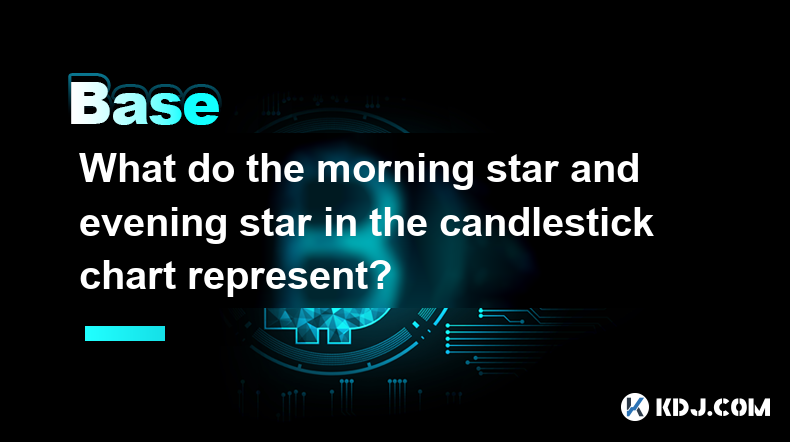
What do the morning and dusk stars in the candlestick chart represent?
Apr 03,2025 at 03:11pm
In cryptocurrency trading, the K-line chart is an important tool for analyzing market trends and price movements. Among them, 'Morning Star' and 'Evening Star' are two important reversal patterns, which represent the key signals of the market's shift from a bear market to a bull market and from a bull market to a bear market, respect...
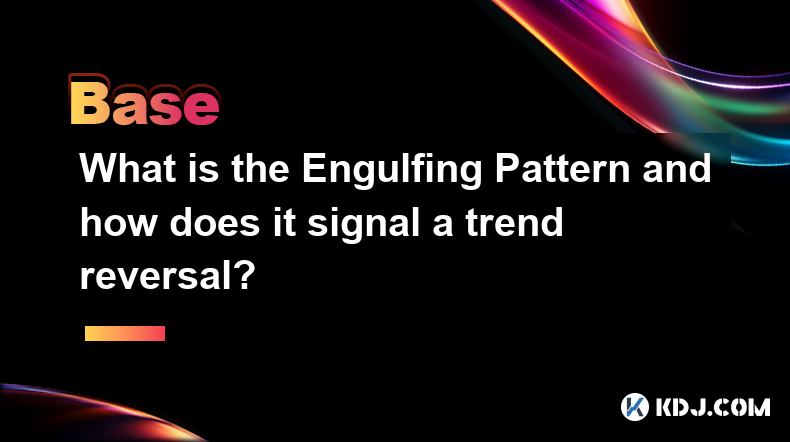
What is the swallowing form? How does it predict a trend reversal?
Apr 03,2025 at 03:07pm
In cryptocurrency trading, technical analysis is one of the important tools traders use to predict market trends and make trading decisions. Among them, the Engulfing Pattern is a common K-line pattern. When it appears on the chart, it is usually considered a signal of a trend reversal. This article will explore in detail what the engulfing pattern is a...
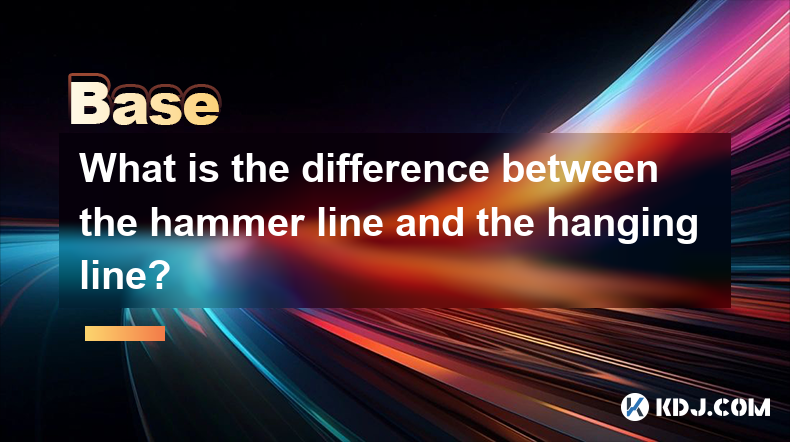
What is the difference between the hammer line and the hanging line?
Apr 03,2025 at 03:03pm
The hammer line and the 'hanging line' pattern are common K-line patterns in technical analysis. They are very similar in appearance, but there are significant differences in the market environment and the predicted market trend. This article will explore the differences between these two forms in detail and help readers better understand and use them f...
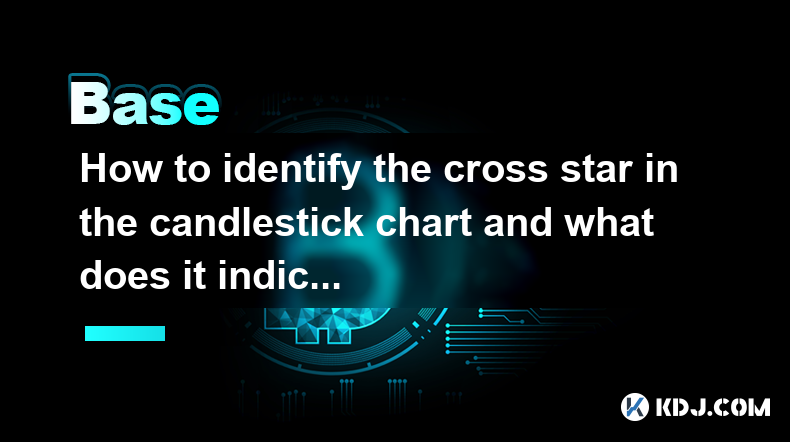
How to identify the cross star in the candle chart and what does it mean?
Apr 03,2025 at 02:57pm
In cryptocurrency trading, the K-line chart is one of the important tools to analyze market trends and price movements. Among them, 'Cross Star' is a common K-line pattern, which is of great significance in analyzing market sentiment and predicting price trends. This article will introduce in detail how to identify the 'cross star' in th...
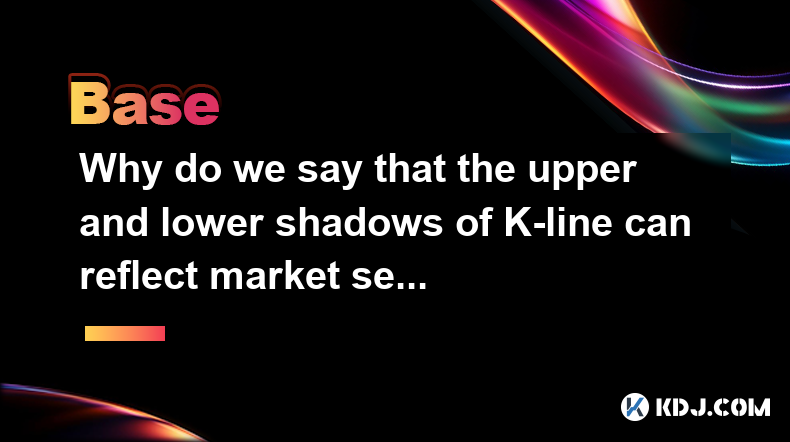
Why do the upper and lower shadows of the K-line reflect market sentiment?
Apr 03,2025 at 02:53pm
The K-line chart is one of the most commonly used tools in technical analysis, and the upper and lower shadows can intuitively reflect the market's long and short emotions and the psychological state of traders. By carefully observing and analyzing the upper and lower shadows of the K-line, investors can better understand market dynamics and make sm...

What are positive and negative lines? What is the difference between them?
Apr 03,2025 at 02:47pm
In the cryptocurrency market, the K-line chart is a commonly used technical analysis tool to show price changes. Each 'candle' in the K-line chart represents the price trend over a period of time, among which 'yang line' and 'yin line' are two key concepts. Understanding them is essential to analyzing market trends and making trading decisions. What is ...

What do the morning and dusk stars in the candlestick chart represent?
Apr 03,2025 at 03:11pm
In cryptocurrency trading, the K-line chart is an important tool for analyzing market trends and price movements. Among them, 'Morning Star' and 'Evening Star' are two important reversal patterns, which represent the key signals of the market's shift from a bear market to a bull market and from a bull market to a bear market, respect...

What is the swallowing form? How does it predict a trend reversal?
Apr 03,2025 at 03:07pm
In cryptocurrency trading, technical analysis is one of the important tools traders use to predict market trends and make trading decisions. Among them, the Engulfing Pattern is a common K-line pattern. When it appears on the chart, it is usually considered a signal of a trend reversal. This article will explore in detail what the engulfing pattern is a...

What is the difference between the hammer line and the hanging line?
Apr 03,2025 at 03:03pm
The hammer line and the 'hanging line' pattern are common K-line patterns in technical analysis. They are very similar in appearance, but there are significant differences in the market environment and the predicted market trend. This article will explore the differences between these two forms in detail and help readers better understand and use them f...

How to identify the cross star in the candle chart and what does it mean?
Apr 03,2025 at 02:57pm
In cryptocurrency trading, the K-line chart is one of the important tools to analyze market trends and price movements. Among them, 'Cross Star' is a common K-line pattern, which is of great significance in analyzing market sentiment and predicting price trends. This article will introduce in detail how to identify the 'cross star' in th...

Why do the upper and lower shadows of the K-line reflect market sentiment?
Apr 03,2025 at 02:53pm
The K-line chart is one of the most commonly used tools in technical analysis, and the upper and lower shadows can intuitively reflect the market's long and short emotions and the psychological state of traders. By carefully observing and analyzing the upper and lower shadows of the K-line, investors can better understand market dynamics and make sm...

What are positive and negative lines? What is the difference between them?
Apr 03,2025 at 02:47pm
In the cryptocurrency market, the K-line chart is a commonly used technical analysis tool to show price changes. Each 'candle' in the K-line chart represents the price trend over a period of time, among which 'yang line' and 'yin line' are two key concepts. Understanding them is essential to analyzing market trends and making trading decisions. What is ...
See all articles























































































